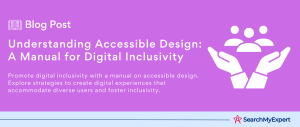Brief History of Wearables: From Early Beginnings to Modern Innovations
The Evolution of Wearables: A Journey Through Time
Wearable technology, often referred to as “wearables,” has a history that’s as fascinating as its applications. The journey began decades ago, originating from simple devices and evolving into the sophisticated gadgets we see today.
The Early Days: Pioneers of Wearable Tech
- 1960s-1970s:
The foundation of wearable technology was laid in these decades, with inventions like the calculator watch. - 1980s:
Advancements in miniaturization and computing power led to more functional devices.
The 90s and 2000s: A Period of Expansion and Innovation
- 1990s:
The era of the digital revolution, introducing devices like the first wearable cameras. - 2000s:
This period saw the emergence of fitness trackers and smartwatches, marking a significant shift in wearables’ utility and design.
The 2010s and Beyond: A New Era of Smart Wearables
- 2010s:
The explosion of smart wearables – fitness bands, smart glasses, and advanced health monitoring devices. - 2020s: The current focus is on seamless integration, enhanced functionality, and personalization.
Why Wearables? Unveiling the Unique Strengths
Wearable technology stands apart from traditional tech in several ways:
- Convenience:
Wearables offer unparalleled convenience, being easily accessible on our bodies. - Personal Health Monitoring: They have become crucial in health and fitness tracking, offering real-time data.
- Enhanced Connectivity:
Wearables keep us connected in ways that other devices can’t, offering more immediate notifications and interactions.
Challenges and Opportunities: Navigating the Wearable Landscape
While wearables present exciting possibilities, they come with their own set of challenges:
- Design Constraints: Balancing aesthetics with functionality remains a key challenge.
- Battery Life:
Ensuring long battery life without increasing size is a persistent issue. - Privacy Concerns: With constant data collection, ensuring user privacy is crucial.
Opportunities for Growth and Innovation
- Medical Applications:
Expanding wearables in healthcare offers immense potential. - Sustainable Designs: Focus on eco-friendly materials and longer product lifespans.
- Integration with Emerging Tech: Combining wearables with technologies like AI and VR opens new avenues.
Understanding the User: A Deep Dive into Wearable Tech
Identifying the Target Audience: Who Benefits from Wearables?
To understand the full impact of wearable technology, it’s essential to identify the specific user groups and their unique needs, wants, and pain points:
Fitness Enthusiasts
- Needs: Accurate tracking of physical activities and health metrics.
- Wants:
Motivational tools and social sharing capabilities. - Pain Points: Inaccuracy in data and limited battery life.
Health-Conscious Individuals
- Needs: Continuous health monitoring and alerts for potential issues.
- Wants:
Integration with medical records and easy sharing with healthcare providers. - Pain Points: Concerns about privacy and data security.
Tech-Savvy Consumers
- Needs:
Latest technology with seamless integration with other devices. - Wants:
Customizable interfaces and cutting-edge features. - Pain Points:
High cost and rapid obsolescence.
Context of Use: Where and How are Wearables Used?
Wearables are used in various scenarios, each presenting unique challenges and opportunities:
- At Home:
For health monitoring, smart home control, and personal entertainment. - In the Workplace: Enhancing productivity and ensuring employee safety.
- During Sports and Fitness Activities:
For performance tracking and injury prevention. - In Healthcare Settings: Assisting in patient monitoring and treatment management.
User Interactions: Engaging with Wearable Technology
Understanding how users interact with wearables is crucial for design and functionality:
- Input Methods:
Touchscreens, voice commands, and gesture controls. - Feedback Mechanisms:
Haptic feedback, visual cues, and auditory signals.
Limitations to Consider:
- Screen Size:
Small displays limit the amount of information and interaction complexity. - Battery Life:
Prolonged use can be limited by battery capacity. - Ergonomics:
Wearables must be comfortable and non-intrusive.
Prioritizing Functionality in Wearable Technology
Core Features: The Essentials of Wearable Tech
When it comes to wearable technology, certain core features are essential to meet user expectations and needs. These features form the backbone of any wearable device:
Health and Fitness Tracking
- Essential Data Points:
Steps, heart rate, sleep quality, calories burned. - Impact:
Provides critical health information and encourages a healthy lifestyle.
Connectivity and Notifications
- Essential Functions: Calls, messages, and app notifications.
- Impact:
Keeps users connected without needing to access their phones constantly.
Battery Life and Durability
- Key Requirement: Long battery life and robust build.
- Impact: Ensures reliability and usability in various environments.
Value Proposition: Enhancing Lives with Wearables
The value proposition of wearable technology lies in its ability to enhance users’ lives:
- Health Management:
Continuous health tracking aids in early detection of potential health issues. - Lifestyle Convenience:
Integration with smartphones and smart homes simplifies daily tasks. - Personal Safety: Features like fall detection and emergency alerts offer peace of mind.
Minimizing Complexity: Keeping It User-Friendly
In the world of wearables, simplicity is key. Prioritizing intuitive functionalities is crucial:
- Streamlined Interface: Limit the amount of information displayed to avoid clutter.
- Easy Navigation:
Gesture controls and voice commands for effortless interaction. - Personalization:
Allow users to customize what information is displayed and how.
Designing for the Body: Ergonomics and Aesthetics in Wearables
Ergonomics and Comfort: Key to Long-Term Wearability
When it comes to wearable technology, the importance of ergonomic design cannot be overstated. Here’s why:
Comfort for Continuous Wear
- Essential Aspect: A design that doesn’t cause discomfort during prolonged use.
- Impact: Increases user adoption and continuous usage.
Secure Fit
- Priority: Devices must stay in place during various activities.
- Impact:
Ensures accurate tracking and uninterrupted usage.
Materials and Aesthetics: Blending Function and Fashion
The choice of materials and design aesthetics is crucial in appealing to users:
Materials: Lightweight and Durable
- Key Choices:
Silicone, lightweight metals, and breathable fabrics. - Impact:
Ensures comfort and longevity of the device.
Aesthetics: Stylish and Personal
- Design Goal:
Devices should complement the user’s personal style. - Impact:
Makes wearables more attractive and versatile fashion accessories.
Size and Form Factor: Striking the Right Balance
Finding the right balance between functionality and aesthetics is essential in wearable design:
- Discreet and Elegant:
Devices should not be obtrusive or clunky. - Functional Yet Stylish: Must contain necessary features without compromising on style.
- Customization Options:
Allowing users to personalize the look and feel.
Crafting the User Interface for Wearable Technology
Optimizing for Limited Screen Space
The small screen size of wearables presents a unique challenge in user interface design. It’s crucial to make the most out of the available space:
Clear Information Display
- Goal: Present essential information clearly and concisely.
- Method: Use of bold text, simple icons, and prioritization of key data.
Intuitive Interactions
- Focus:
Ensure that interactions are natural and easy to perform. - Approach:
Simplify navigation and minimize the number of steps for common tasks.
Data Visualization on a Small Screen
Presenting data in an informative yet visually appealing way is vital:
- Graphs and Charts: Use compact visuals to represent data trends.
- Color Coding:
Utilize colors for quick recognition of different metrics. - Customizable Views:
Allow users to choose which data they want to see.
Interaction Design: Making the Most of Gestures and Voice
In wearable technology, the interaction design should cater to the device’s unique usage scenarios:
- Gestures: Implement swipe and tap gestures for basic navigation.
- Voice Commands: Enable voice control for hands-free operation.
- Minimal Touch Controls: Design touch controls to be large enough for easy interaction, yet unobtrusive.
Optimizing for Performance in Wearable Technology
Maximizing Battery Life for Enhanced Usability
One of the critical challenges in wearable technology is ensuring that devices have sufficient battery life to last through the user’s day. Here’s how:
Designing for Efficiency
- Approach: Use low-power components and optimize software to minimize power consumption.
- Impact: Prolongs battery life, reducing the frequency of charges needed.
Smart Power Management
- Strategy: Implement adaptive brightness, sleep modes, and energy-saving features.
- Benefit:
Balances functionality with power usage for longer device endurance.
Ensuring Reliable and Secure Connectivity
Connectivity is a cornerstone of wearable technology, facilitating data transfer and integration with other devices:
Choosing Communication Protocols
- Opt for protocols like Bluetooth Low Energy (BLE) for efficiency and range.
- Ensure compatibility with a wide range of devices.
Seamless Integration
- Focus on smooth synchronization with smartphones and other smart devices.
- Ensure a user-friendly pairing and connection process.
Data Security and Privacy: A Top Priority
With wearables collecting sensitive user data, security and privacy are paramount:
Robust Security Measures
- Implement end-to-end encryption for data transmission.
- Regularly update software to address vulnerabilities.
User Data Protection
- Allow users to control what data is collected and shared.
- Be transparent about data usage policies and adhere to privacy regulations.
Testing and Iteration: Perfecting Wearable Technology
Prototyping and User Testing: Involving Users in the Design Process
The development of wearable technology greatly benefits from early and ongoing user involvement. Here’s how it’s done:
Rapid Prototyping
- Method:
Create functional prototypes to test design concepts. - Benefit:
Quickly identify strengths and weaknesses in the design.
User Testing Sessions
- Approach: Conduct sessions where users interact with prototypes.
- Objective:
Gather feedback on usability, comfort, and functionality.
Real-World Testing: Evaluating in Various Environments
Testing wearables in real-world scenarios is crucial to understand how they perform under different conditions:
Different Environments
- Test in various settings like urban, rural, indoors, and outdoors.
- Evaluate performance in diverse weather and activity conditions.
Usage Scenarios
- Simulate common use cases to assess practicality and reliability.
- Ensure the device’s durability and battery life in typical daily use.
Continuous Iteration: Refining Based on Feedback
The design of wearables is an iterative process, continually evolving based on user input and data analysis:
Adapting Design
- Make necessary adjustments to improve user experience and functionality.
- Incorporate new technologies and trends as they emerge.
Refining Based on Data
- Analyze usage data for insights into how devices are used in daily life.
- Implement changes that enhance performance and user satisfaction.
Conclusion
The journey of wearable technology is a blend of innovation, user-centric design, and continuous evolution. From understanding the diverse needs of users to crafting interfaces and optimizing performance, each step is vital in shaping wearables that seamlessly integrate into our lives. As we look forward, the key lies in balancing functionality with aesthetics, prioritizing user privacy and connectivity, and embracing the iterative nature of design. Wearable technology is not just about the devices we wear; it’s about enhancing human experiences and opening new horizons in how we interact with technology.
Create compelling digital experiences with our Digital Design Company.
Table of Contents
Toggle






